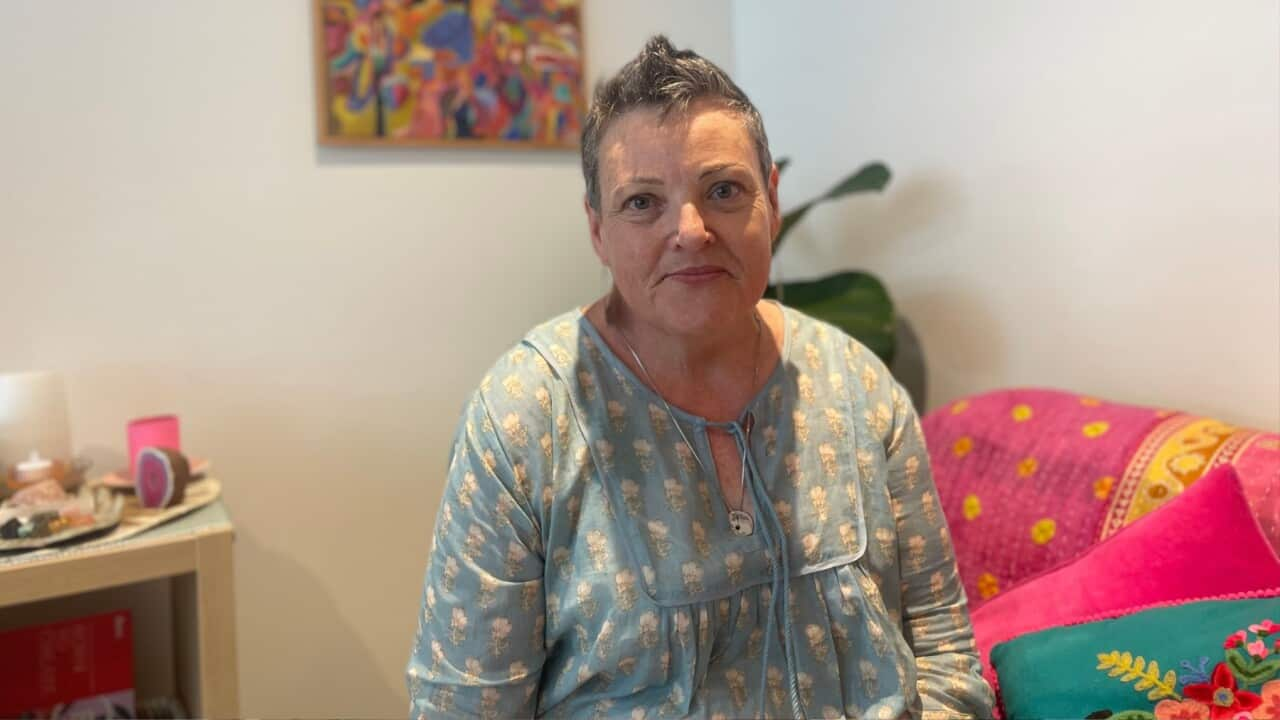TRANSCRIPT
68 year old Aunty Maureen has been living with type 2 diabetes for around two decades.
"My doctor said that if I continued doing what I was doing.. which was basically nothing.. I would have ended up on insulin."
A proud Wiradjuri woman from Leeton in New South Wales, she now lives in Western Sydney.
And last year joined the Too Deadly For Diabetes program, which helps Aboriginal and Torres Strait Islander communities tackle diabetes through diet and exercise.
"I dropped from 86 kilos to 67. My sugars were 15 to six this morning. And I have gone from four diabetes tablets and medication, down to one."
Success stories like Aunty Maureen's have been shared at a community event in Western Sydney to raise awareness about the alarming rise of diabetes diagnoses.
Ray Kelly is a diabetes researcher, exercise physiologist, and proud Gomeroi man, an advocate for the use of Continuous Glucose Monitors, the latest in diabetes monitoring devices.
He says Continuous Glucose Monitors, or CGMs, allow those living with Diabetes to be more aware of what is going on with their blood sugar level and how what they do affects it.
"The technology around diabetes care has just made a phenomenal improvement to our program, so we were already getting great outcomes. But by the use of, say, continuous glucose monitors, CGMS by patients, it allows them to get a great understanding of how food and exercise impacts their blood sugar levels, and by doing that, it motivates them. They know that they get a sense of control, and so it makes it easier for us to get better goals in terms of weight loss, blood glucose level control, but also reduction in medications."
But diabetes rates are rising.
Mr Kelly explains why and what needs to be done.
"Because of a combination of access to health care, the cost of fresh food, the sort of misinformation that's around through social media, but also just through some organisations around what can be achieved. And it's only really been the last few years that remission of type two diabetes has really been accepted across the board, but it's been, we've been doing that for 15, 20 years. So you know, it's about getting everyone working together, all the key stakeholders, supporting people, working with the individual and setting them up for the goals they want to achieve."
The latest data shows 40 per cent of Aboriginal adults in remote central Australia are living with diabetes - that's the highest recorded diabetes prevalence in the world.
And Aboriginal and Torres Strait Islander peoples are also experiencing the highest rates of youth-onset diabetes in the world.
Deanne Minniecon is an adjunct associate professor and the Diabetes Australia National Manager for Aboriginal and Torres Strait Islander Engagement.
She says if not managed, diabetes gets worse and worse and puts a person's life at risk by their 30s.
"We're looking at kids being diagnosed with type 2 diabetes at the age of four. So then the risk of complications extends to when they are teenagers, by their 20s there could be complications like blindness or amputations, by their 30s there's a risk of losing lives."
The event is also highlighting calls to increase affordable access to diabetes management technologies.
18 year-old Malakai monitors his blood sugar levels and takes insulin through wearable devices that have changed his life.
He uses a CMG and an Insulin pump which measures the dose he needs.
"With the prick test you have to do about five to seven times a day. Usually about every two hours, and when you do it too many times with a certain finger, your finger begins to get bruised and hardened and all that. So that's the reason I switched from the prick test to a sensor."
Malakai says there has been a significant decrease in the number of times he's needed to visit a hospital.
He says there have been five times where he nearly died, he's been to the hospital 30 times, but since receiving the CMG and Insulin pump two years ago, he has never needed to go to hospital.
But this technology is not cheap.
Advocates are calling on the federal government for funding to improve access to these technologies.
CGMs are currently only subsidised for Type 1 diabetes, but have proven to be effective for those living with Type 2 and other types of diabetes.
Justine Kane is CEO of Diabetes Australia.
"So it can be up to $5,000 a year to have access to a CGM, if you don't have subsidies, even more, in some cases, depending on, you know, sometimes they come off and you have to replace them. So that's an issue. We also have a situation where for pumps only top health cover, so only gold health insurance, covers insulin pumps. Now we know in this cost of living, crisis, families can't afford these things. I have people telling me they're giving up their car insurance, their house insurance. They're stopping having any takeaway, they're not going out at all, to access these types of subsidies."













